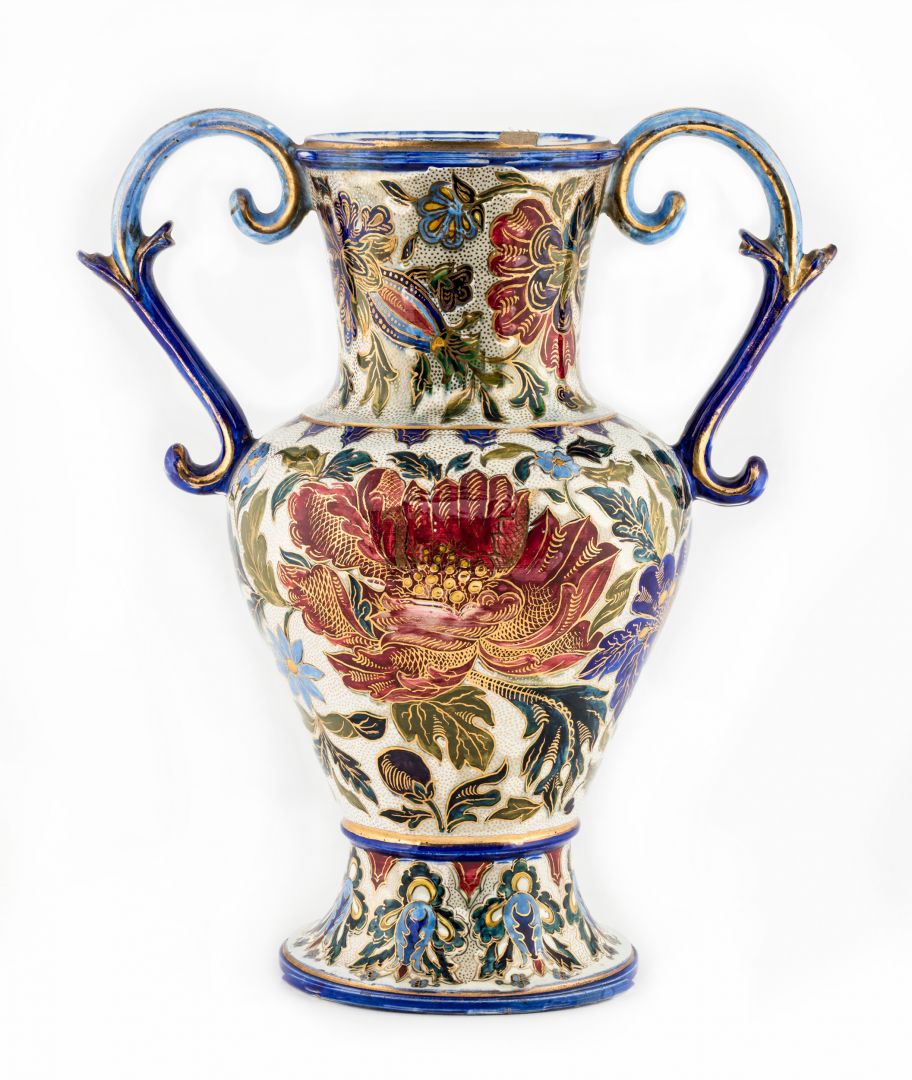Hall 3 - 5. view
Vase
VÁNCZA, EMMA (1863–1943)
Decorative vase, 1882–1900
hand-painted, glazed, gilded earthenware; rim diameter: 11 cm, base diameter: 13.5 cm, height: 32 cm; unmarked
Fine Arts Collection, Inv. No.: 89.54.
The Váncza family were significant members in the social and cultural life of Miskolc for nearly a century. The multifaceted Mihály Wándza, whose activities involved playwriting, theatre set design, painting and many more, settled in Miskolc in 1818. Several variations of his family name can be found in records, although his descendants all opted to use the form Váncza. His son, Mihály Váncza worked as a lawyer in Miskolc and put great attention on the tuition of his children. His eldest son, also named Mihály, became an esteemed journalist, author and photographer; his daughter Emma also worked as a photographer and his youngest son, József, became a pharmacist.
Emma Váncza, who married photographer Károly Forst in 1897, became a prominent member not only in Miskolc, but in the history of Hungarian photography as well. Her interest in photography was influenced by her brother. At age 18, her father set up a studio for her. The colorized panoramic images of the landscapes around Miskolc represent the apex of her career; these proved to be very successful at the 1896 Millennium Exhibition where she even won an award.
Our gallery presents another, more intimate side of Emma Váncza, whose skills, education and family background all culminated in an exceptional career. She had been drawing since her childhood, with a strong preference towards floral and plant motifs. Her drawing skills proved to be very useful for the retouching and post-colorization of photographs, but she was also able to develop her artistry in other areas as well. She enjoyed painting standalone compositions, landscapes and figurative images, which she regularly gifted to her friends and acquaintances. Ceramic painting was another hobby of hers. It is likely that the 1882 opening of the glass staining and porcelain painting business of Miskolc trader Koós Miksa played a part in this interest as she could learn techniques and purchase vessels to paint from there and also receive aid on how to fire painted vessels.
The vase heavily decorated with floral ornaments was added to the collection of the Herman Ottó Museum from the legacy of Emma Váncza’s daughter in 1989.
The history of the Váncza family is covered in a study written by Béla Tarcai (in Hungarian): A Herman Ottó Múzeum Évkönyve XXX–XXXI. Miskolc, 1993. 375–393.
Andrea Pirint
